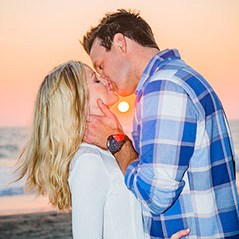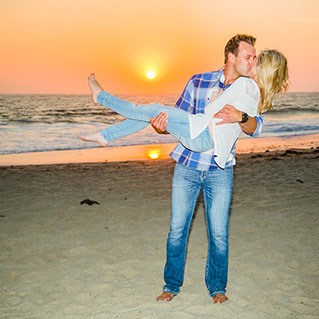How to master the basics about on-camera flash photography
On-camera flash photography is an essential skill for photographers, whether you’re shooting weddings, portraits, events, or any scenario where lighting conditions are less than ideal. Understanding the fundamentals of on-camera flash not only allows you to capture well-exposed images in challenging environments but also gives you the creative control needed to shape light to your advantage.We wanted to explore the basics of on-camera flash photography, its benefits, challenges, and how to overcome common issues.
Remember, while The WYNG enhances your flash, knowing your camera settings is key for perfect results. Adjust your aperture, shutter speed, and ISO to match the lighting conditions and your creative vision.
What is On-Camera Flash Photography?
On-camera flash photography refers to the use of a flash unit that is mounted directly on top of your camera, typically in the hot shoe. This setup provides a convenient, portable light source that can be invaluable in situations where natural light is insufficient or when you need to fill in shadows to create a more balanced exposure.
Common Uses of On-Camera Flash:
- Low-Light Situations: On-camera flash is particularly useful in dimly lit environments where natural light is either too weak or non-existent. Whether you’re shooting indoors, at a night event, or in any setting where lighting is minimal, an on-camera flash helps ensure your subjects are well-lit and your images are properly exposed.
- Fill Flash in Bright Conditions: Even in bright conditions, on-camera flash can be essential. For example, when photographing a subject in strong backlighting, like during a sunset, your camera may expose for the background, leaving your subject underexposed. A fill flash helps illuminate your subject, balancing the exposure and enhancing details.
- Freeze Action: In fast-paced environments, such as during a wedding reception or sporting event, on-camera flash can help freeze action. The quick burst of light effectively captures motion, ensuring sharp images even in dynamic situations.




The Challenges of On-Camera Flash Photography
While on-camera flash offers many benefits, it also comes with its own set of challenges. The direct, unfiltered light produced by a flash can often result in less-than-ideal unflattering images if not properly managed. Here are some common issues photographers encounter with on-camera flash:
Harsh Shadows:
One of the most significant challenges with on-camera flash is the creation of harsh shadows. Because the light source is small and direct, it tends to cast strong, defined shadows, especially when the flash is used without any modification. These shadows can be particularly unflattering in portraits, creating hard lines and detracting from the overall aesthetic of the image.
Flat Lighting:
Direct flash can also lead to flat lighting, where your subject appears evenly lit but lacks depth and dimension. This occurs because the light is coming from a single direction—directly in front of the subject—reducing the natural contrast that gives an image a three-dimensional feel. Flat lighting can make your subjects appear less dynamic and your images less engaging.
Overexposed Highlights and Hot Spots:
When using on-camera flash, it’s easy to end up with overexposed highlights or “hot spots” where the light is too intense. These overly bright areas can distract from the rest of the image and make your subject look unnatural. This is especially problematic in portraits, where even skin tones are crucial.
Red-Eye Effect:
Red-eye is another common problem when using on-camera flash. It occurs when the flash reflects off the retina of your subject’s eyes, creating a red dot in the center of their pupils. This effect is particularly prevalent in low-light situations where the subject’s pupils are dilated, allowing more light to reflect back to the camera.




The Importance of Light Control in On-Camera Flash
Given the challenges of on-camera flash, controlling and shaping the light is critical to achieving professional-quality results. This is where light modifiers come into play. By diffusing, bouncing, or redirecting the light from your flash, you can mitigate the harshness and create a softer, more natural look.
Understanding Light Modifiers:
A light modifier is any tool or accessory that alters the quality, direction, or intensity of light from your flash. Some common types of light modifiers include:
- Diffusers: A diffuser is designed to spread the light from your flash over a larger area, softening the light and reducing harsh shadows. Diffusers can range from simple, snap-on covers to more complex softboxes.
- Bounce Cards: Bounce cards direct the light from your flash onto a surface, like a ceiling or wall, which then reflects the light onto your subject. This technique spreads the light more evenly, reducing the intensity of shadows and highlights.
- Softboxes: A softbox is a larger, enclosed diffuser that attaches to your flash. It produces very soft, even light, making it ideal for portrait photography.
Each of these modifiers has a specific role, and the right choice depends on the look you want to achieve and the shooting conditions.
What’s great about our modifier, The WYNG, is that it’s a versatile triple threat, capable of performing or mimicking all of the above.
In conclusion, embracing on-camera flash is a must and mastering the basics of on-camera flash photography is a crucial step for any photographer looking to improve their skills and expand their creative possibilities. While direct flash can be challenging to work with, understanding how to control and modify the light allows you to produce stunning images in any lighting condition.
As you become more comfortable with on-camera flash, you’ll find that it opens up new opportunities for creativity and expression in your photography. Whether you’re dealing with low light, tricky backlighting, or fast-moving subjects, the ability to harness the power of your flash will set your work apart.
Ready to take your on-camera flash photography to the next level?
Discover the power of The WYNG, and experience our versatile flash modifier that combines the benefits of diffusers, bounce cards, and softboxes in one lightweight, easy-to-use tool. Whether you’re shooting weddings, portraits, or events, The WYNG will help you achieve beautifully lit images with confidence.

